“Delete! Delete! Delete! This picture too! »
The soldier is holding my camera, and it is he himself who erases the compromising photos. Compromising? However, I thought I was following the rule given when we arrived in Milam, a mountain pasture village at the foot of a Himalayan glacier: no photography of the nearby Indian military camp.
The border of Tibet, in other words of the Chinese enemy , is less than 20 kilometers as the crow flies.
At more than 3,500 m above sea level, this high valley of Johar, in the Indian state of Uttarakhand, has great strategic value. Tourists can pass there during a trek, attracted by the neighboring peaks (the Nanda Devi, 7816 m) or by the ruins of Milam, this Himalayan Pompeii abandoned with the gradual end of cross-border trade since the Chinese invasion of Tibet in 1959.
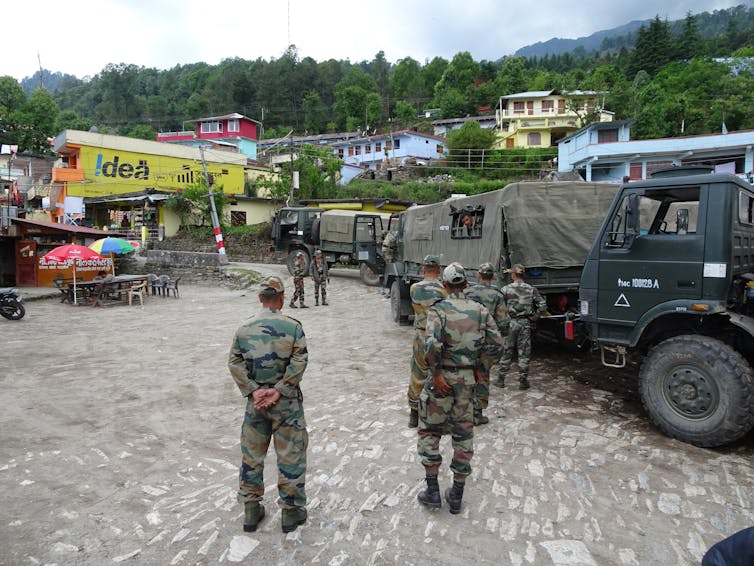

Tourism promoters (small agencies in the town of Munsyari three days' walk away, Delhi tour operators, etc.) encourage the arrival of visitors, foreigners as well as Indians. But this tourism is far from being a priority in the face of geopolitical issues.
I had made the mistake of photographing not only panoramas where you could discern a piece of camp in the distance, but also the local temple: however, on its pediment was displayed an inscription thanking the army for its support to the restoration of the building.
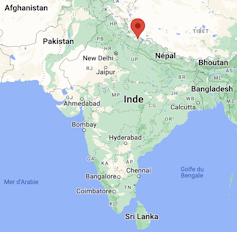
Who owns the landscape in Upper Johar? Certainly not for tourists. To transhumant pastoralists who take goats and cattle there to graze? To the few farmers who go up to Milam to cultivate chives and potatoes, the latter often sold to the military? To cordyceps researchers, this mushroom which sells for one million rupees per kilo (€12,000) because of its medicinal and aphrodisiac properties for the Chinese market? Certainly, the landscape belongs above all to the military.
Landscapes, a political power
In an Asia of the highlands where agriculture remains predominant, but where tourism is developing, are the landscapes appreciated by tourists the same as those built by the villagers? This is not just a question of aesthetics, but of political power . Indeed, if the tourist landscapes are the same as the agrarian landscapes, then their producers, above all the local populations, have a certain leverage to impose their views on the promoters of tourism, including the State.
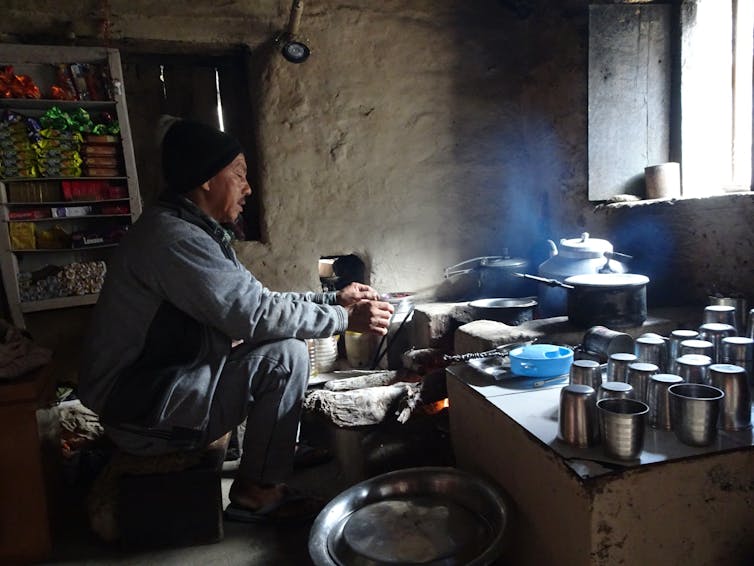
If this is not the case, there is a risk that the villagers will be dispossessed of their resources , in favor of new landscape constructions built for the sole purpose of tourism. This would then take on the continuation of a long historical tradition in the Indian Himalayas, the state striving since British colonization to control the forests in the name of the exploitation of timber , then of the protection of the environment .
Agrarian areas that seduce
But let's travel further east, 370 km as the crow flies: another field of study in Nepal, the Annapurnas, and more precisely the area of the Mardi Himal trek , an old route "reopened" in 2012 and in full swing. Since.
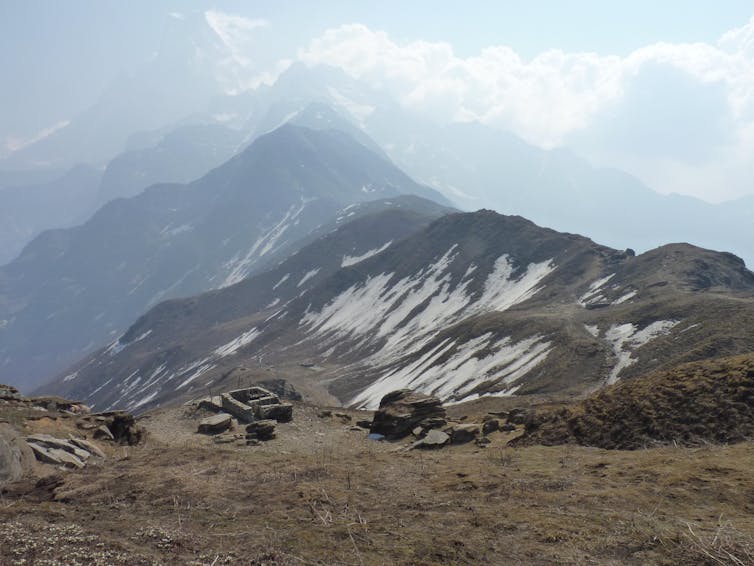
There, no restrictions on photography! The tourist is king, and much better welcomed than in Johar, in a less strategic area, open for longer to foreigners, in a country where tourism represents more than 7% of the GDP .
There are many lodges along the trek paths. The share of Nepalese tourists is growing rapidly, but they have come just like foreign tourists, especially for the summits and peaks – with an increasingly sporting component (canyoning, paragliding, etc.).
The agrarian landscapes, such as the rice terraces, up to around 1800 m, are not the main attraction at the start. It remains that our interviews reveal that it is often all the panoramas that are photographed – fantastic slopes stepped over sometimes more than 1000 m.
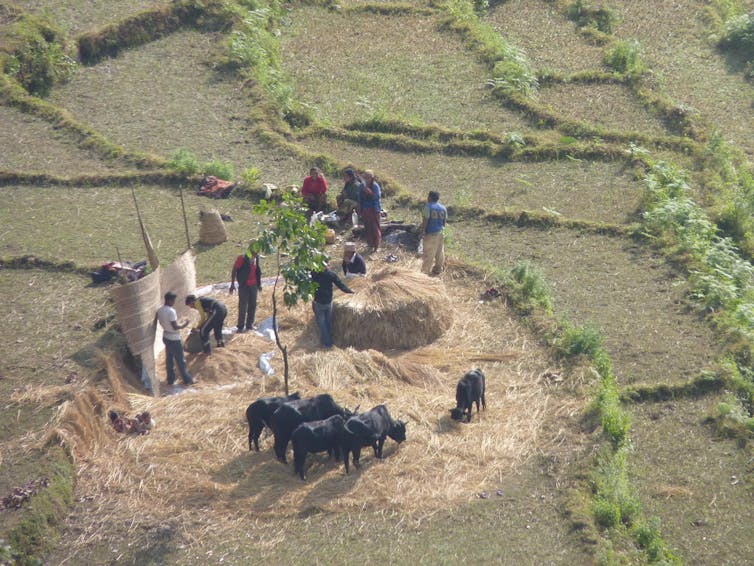
And the progress of the walk, which crosses villages and fields at low altitude, makes you discover landscapes and agrarian societies that appeal, especially to Western tourists.
Locals who put their culture into tourism
This is taken advantage of by the local populations, and in particular the Gurung, a Tibeto-Burman ethnic group . They own most of the refuges and lodges, and their culture is highlighted, even put into tourism , by folklore shows or small museums like that of Ghandruk. The songs and dances are popular with tourists, as are the “traditional” dishes which are cooked with locally grown ingredients without chemical inputs. However, there is a risk of reinforcing an “exotic” and folkloristic dimension .
[ More than 85,000 readers trust The Conversation newsletters to better understand the world's major issues . Subscribe today ]
These private initiatives have support outside the region, thanks to emigrants who can invest their savings in tourist accommodation, but also in the institutional framework of the Annapurna Conservation Area Project (ACAP), entirely financed by entrance fees. paid by tourists (€21 per foreign person in 2023); it has a participatory component leaving some decision-making power to the local populations, for tourism, but also for agricultural uses or forest management, and allows the redistribution of part of the tourist income to the villages concerned.
In the area studied, a coordinated program of homestays ( homestays ) linked to a network of paths ( Macchapucchre Model Trek ) from 2007 encouraged local development, so crucial at a time when people were leaving of the civil war . Collective organization at the level of each village is often institutionalized by groups of women, so as to distribute overnight stays equitably between households. In fact, women often appear as the main beneficiaries , but this translates into an overload of work for them, especially when the men are on the move, and the high castes Brahmins and Gurung receive the bulk of the income.
Communities that adapt their interests to the situations
A local association practices a similar distribution principle near Munsyari. But for the rest, the situation on the Indian side is very different. In Johar, no ACAP, no tourism policy integrated into an environmental policy. The dominant population is that of the Bhotias, a community who managed to obtain the status of "tribe" to benefit from the policy of positive discrimination of India , even though they were those wealthy cross-border merchants who traded with Tibet while having their land worked by sharecroppers from untouchable castes.
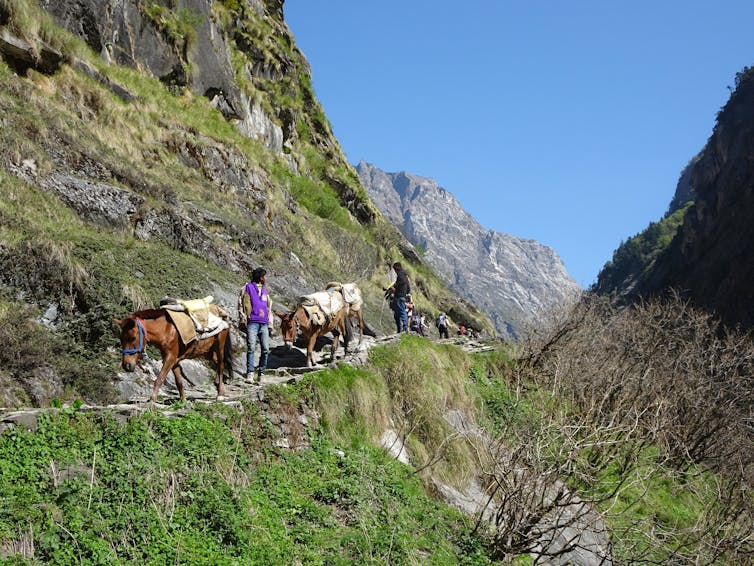
They have lost part of this land because of the agrarian reforms, but their reconversion into urban activities, in the plains, in Delhi or elsewhere, has often been very profitable.
Some of them seek to maintain the deserted high-altitude hamlets, former relays of trade and transhumance where the altars of the ancestors are located – the surnames of the Bhotias often include the toponym of their ancestral hamlet. But for the most part, their interests lie elsewhere, far from the high mountains, including in the army since, like the Gurung, the Bhotia were often recruited as soldiers from the colonial era.
For tourists, the visibility of Bhotia is therefore low. A small “Tribal Museum” is dedicated to them in Munsyari, but for the rest the little existing cultural tourism highlights the Pahari culture, “of the mountains”, more than the culture of a particular community. “Bhotias? But you won't find any here! even replied a tourist from Bengal, very sure of herself.
The incomes of the 10 to 15,000 annual tourists are quite incapable of curbing the rural exodus, which, just like on the southern slopes of the Annapurnas, multiplies the wasteland at medium altitude, and only the fields around Munsyari are cultivated relatively intensively, in potatoes in particular. Monkeys and wild boars make farming more difficult, which creates a vicious circle, as the growth of wasteland promotes the multiplication of wildlife.
But tourists don't care. If the landscape is closed at this altitude, they will always have fantastic panoramas higher up, on the level of lawns and rocks. The rural landscape is (still?) an important resource for the Gurung, but no longer for the Bhotia.
So who owns this landscape? It belongs to the Nepalese peasants, insofar as they are often involved in tourist development, but it belongs less and less to the Indian peasants, either because the military or hydroelectric stakes take up too much space, or because the villagers simply are gradually diverting their agrarian resources. ![]()
Frédéric Landy , Professor of Geography, University of Paris Nanterre – University of Paris Lumières
This article is republished from The Conversation under a Creative Commons license. Read the original article .
